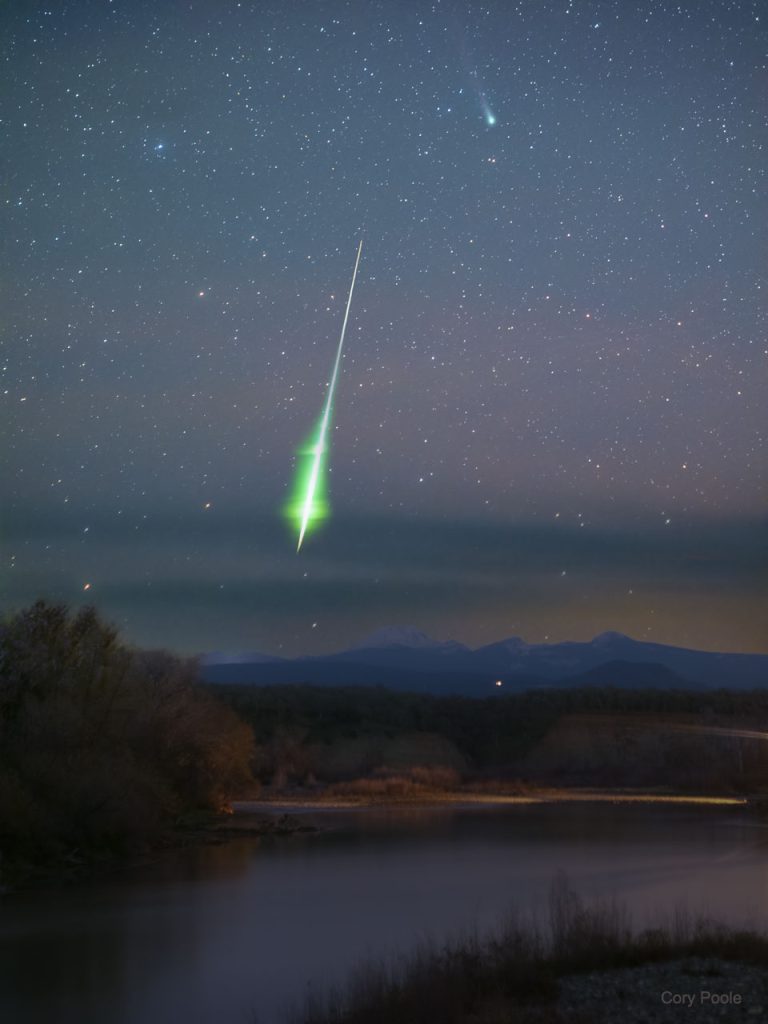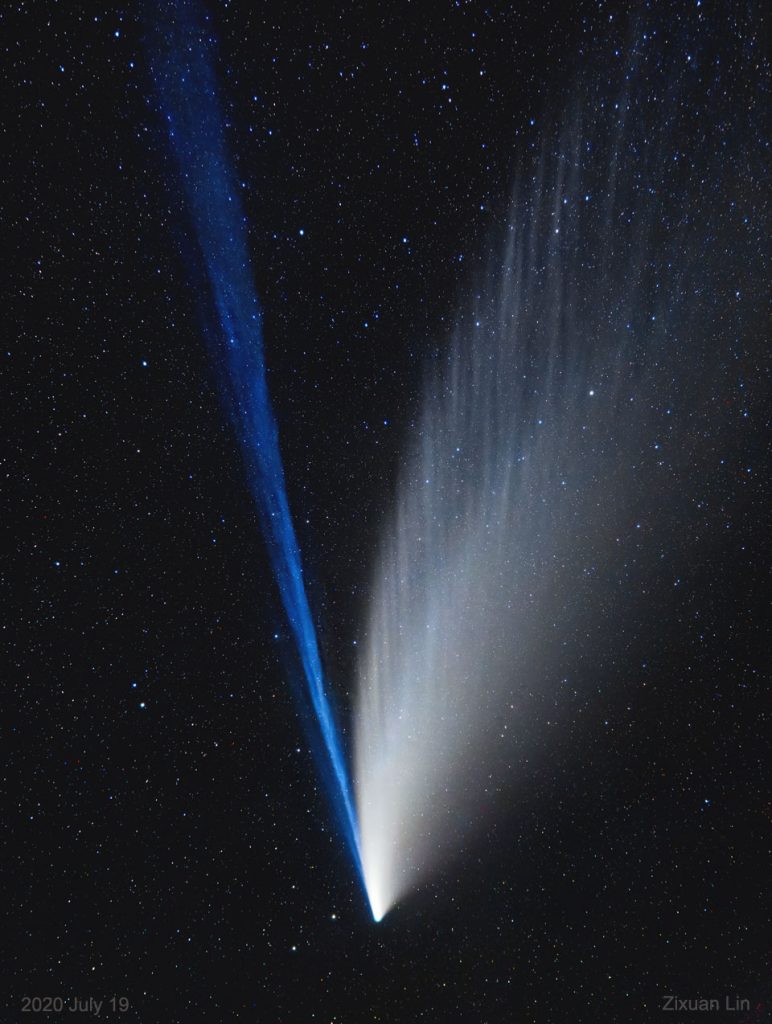Looking for fascinating facts to tell your kids about space? In this article, we have collected interesting facts about comets for kids that will help young researchers understand what heavenly bodies are and why they are so interesting.
What is a comet?

Image Credit & Copyright: Yuri Beletsky (Carnegie Las Campanas Observatory, TWAN)
What is a comet?
Comets are large objects composed of dust and ice that orbit the Sun. Known for their long tails, these ancient objects are remnants of the Solar System’s formation, which occurred approximately 4.6 billion years ago. As comets approach the Sun, their icy cores heat up, releasing gas and dust into space, forming distinct glowing tails. Astronomers continue to explore intriguing questions about comets, such as their precise composition, their origins beyond Neptune’s orbit, and the potential risks they may pose to Earth.
What are the parts of a comet?

Image Credit & Copyright: Shengyu Li & Shaining
The main part of the heavenly body is called the nucleus. It consists of frozen water, gases, dust, and rock. The size of the nucleus usually reaches several kilometers.
Most of the time, a comet consists only of a nucleus. But as it gets closer to the Sun, the heat causes gas and dust to be released. This creates a large cloud around the heavenly body called a coma. The coma is sometimes larger than the Earth and creates the effect of a blurry comet head.
When a comet gets even closer to the Sun, it develops tails. This happens because the Sun’s energy and particle streams push some dust and gas out of the comet into long streaks. Comet tails can be extremely long, as long as the distance from Earth to the Sun.
How are comets named?

Image Credit: Frederico Danin
These heavenly bodies have been observed for more than 2000 years, and several different systems have been used to name them. The earliest system named comets after the year they were first spotted (e.g., Great Comet of 1680).
Later, these heavenly bodies were named after those who discovered or studied them in detail (e.g., Halley’s Comet or Comet Hale-Bopp). Some comets even carry multiple names due to independent discoveries by different astronomers. In the 20th century, due to the increasing number of discoveries, a system of numerical designations was introduced in the order of comets’ perihelion passage (e.g., Comet 1970-2). Since 1994, a new scheme has been used, which assigns a code based on the orbit type and the discovery date (e.g., C/2012 S1), helping standardize comet identification globally.
10 Fun Facts About Comets
- The most famous this heavenly body is Halley’s Comet. It can be observed from Earth approximately every 76 years.
- The nucleus of Halley’s Comet is shaped like a peanut, measuring only 15 by 8 kilometers. Its gravity is so weak that you can easily push off into space from its surface.

Image Credit & Copyright: Cory Poole
- For most of human history, these heavenly bodies have been considered harbingers of disasters and calamities.
- Most of these celestial bodies travel far into the outer reaches of the Solar System, and their complete orbit around the Sun can take from several years to several thousand years.
- Comets are often called “dirty snowballs”. This is because they are composed mostly of frozen gases, dust, and rocks.

Image Credit & Copyright: Zixuan Lin (Beijing Normal U.)
- The orbit of a comet around the Sun is different from the orbit of the planets. Planets move in almost circular orbits, while comets move in elliptical orbits.
- Most of these heavenly bodies originate from two regions of the Solar System – the Oort cloud or the Kuiper belt, which are located behind Neptune and Pluto.
- Some of these icy visitors can be seen without telescopes, even if they are up to 500 million kilometers from Earth.
- These heavenly bodies can be the size of a small city. Most comets are several kilometers in diameter. Smaller comets often burn up before they become visible.
- The Sun can destroy a comet. The Sun’s gravity is so strong that it can vaporize all the volatile substances that make up a comet. As a result, the comet can break up into many smaller parts. This most often happens when a comet flies too close to the Sun.

Image Credit & Copyright: Petr Horálek / Institute of Physics in Opava
These icy visitors from the outer reaches of space are like time capsules, preserving clues about the early days of our cosmic neighborhood. Each comet carries with it a unique history — from its composition and structure to the path it takes through space — and studying them can reveal important information about how the planets, moons, and even life itself may have formed.
Learning about and discovering comets is a great way to better understand the Solar System. Each of the celestial bodyholds unique secrets that help us learn more about the formation and evolution of our Universe. Keep exploring and discovering new interesting facts with us!


